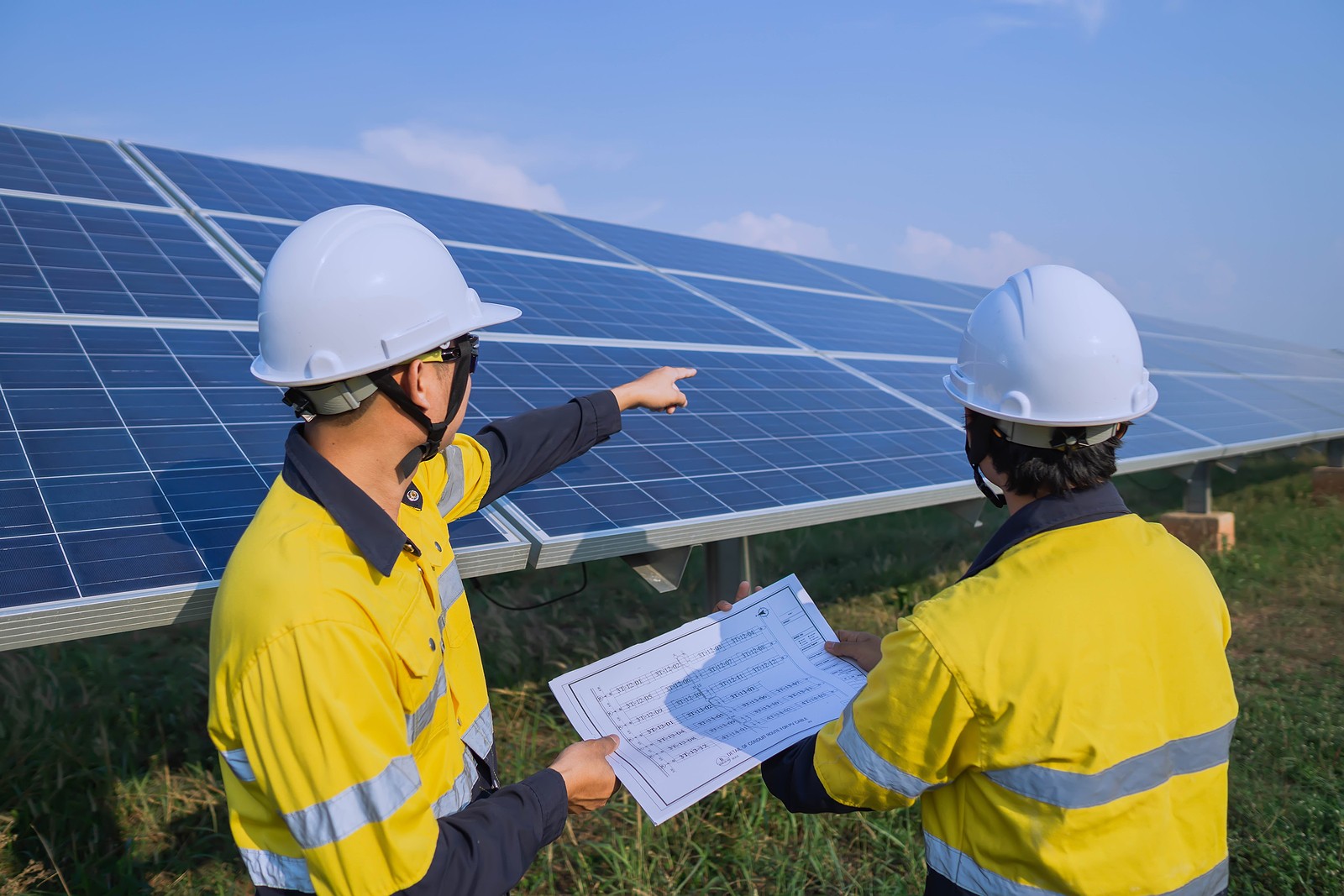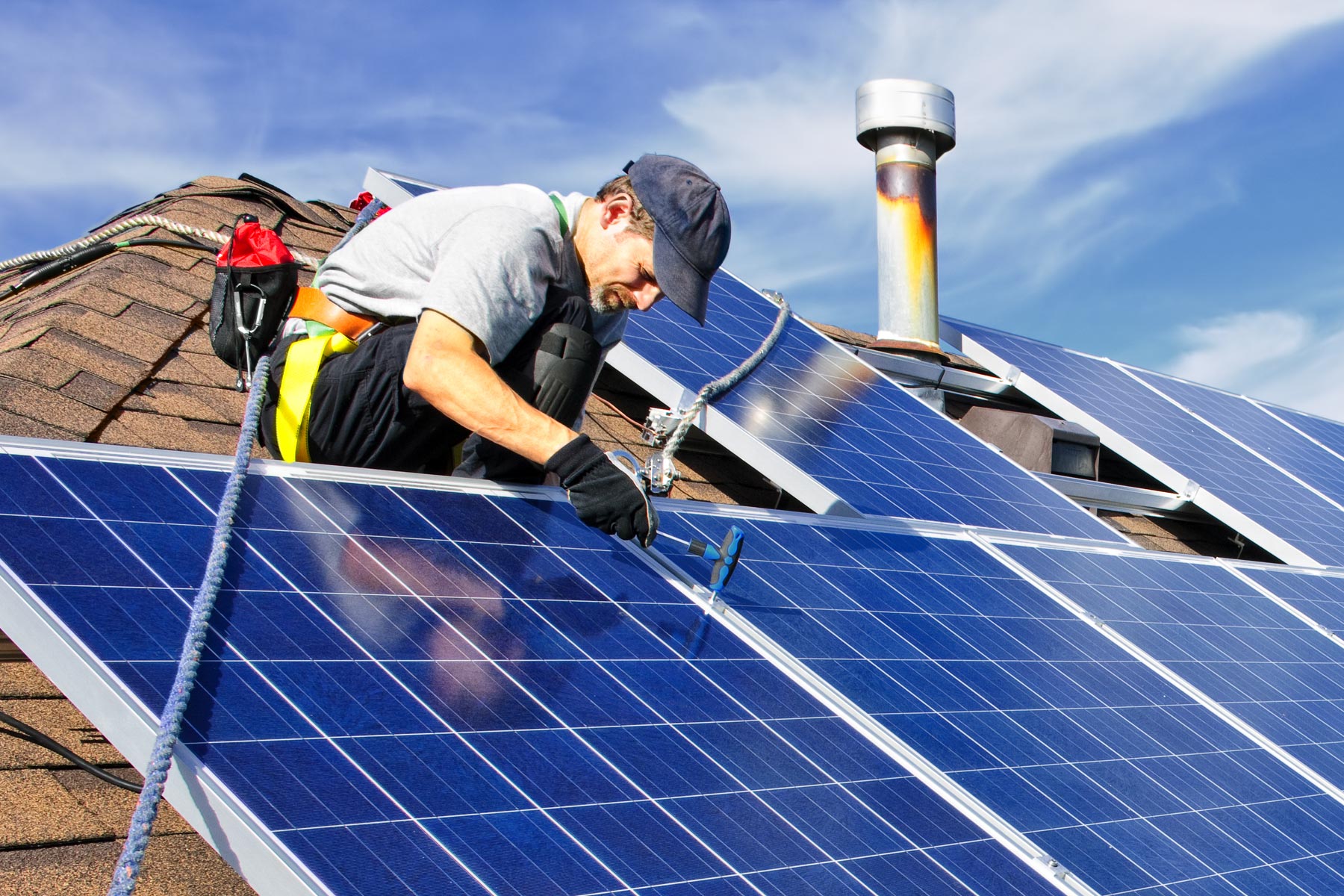Solar Energy System Cost: Large-Scale Photovoltaic Systems Can Considerably Lower Energy Expenses For Companies
Unlocking the Benefits of Business Solar Panels

Have you ever questioned why more services are turning towards industrial solar panels in their energy technique? It's not just about going green-- though that's an engaging reason-- it has to do with utilizing an abundant, free resource that can considerably lower operational expenses gradually. Imagine a factory roof changed into a peaceful, effective energy generator, silently slicing monthly electrical power bills while reducing carbon footprints.
Financial Advantages That Speak Volumes
Business solar panels offer a suite of monetary advantages that can improve a company's bottom line. Consider these crucial points:
- Lowered Energy Costs: Solar power can offset a significant portion of electrical energy use, resulting in instant savings.
- Return on Financial Investment (ROI): Though preliminary installation can be substantial, the long-lasting cost savings often exceed the in advance costs.
- Energy Cost Stability: Unlike nonrenewable fuel sources, solar energy isn't based on market volatility.
- Increased Residential Or Commercial Property Value: Structures geared up with planetary systems tend to appraise higher in value.
Ecological Impact: More Than Simply a Buzzword
Think of the last time you noticed a field of solar panels gleaming under Solar Technicians Near Me the sun. It's a sight that represents hope and obligation. Business solar panels drastically reduce greenhouse gas emissions, helping services align with sustainability goals without compromising efficiency.
- Lower carbon footprint
- Decrease in reliance on nonrenewable energy
- Assistance for business social responsibility efforts
Functional Advantages That Typically Go Undetected
Beyond the apparent financial and environmental benefits, commercial solar panels use operational advantages that numerous overlook. Solar installations can provide energy independence, minimizing vulnerability to power outages or energy rate walkings. This durability can be a game-changer throughout peak demand durations or emergencies.
| Benefit | Description |
|---|---|
| Energy Reliability | Guarantees a consistent power supply, minimizing downtime. |
| Low Maintenance | Commercial solar technology needs very little upkeep. |
| Scalability | Systems can broaden as energy requires grow. |
What's the Catch?

Exists a drawback? Some may argue the upfront financial investment or area requirements. If you peer beyond the surface area, the long-lasting benefits frequently eclipse these challenges. Consider it: in a world where energy costs unexpectedly change, would not you desire a stable, sustainable source? The answer may be clearer than you think.
Eventually, business photovoltaic panels don't just power structures-- they empower businesses to picture a future where earnings and planet exist side-by-side harmoniously. Could this be the energy revolution your company has been waiting for?
Installation Process and Considerations
Picture standing atop a commercial roof, the sun blazing overhead, panels gleaming like fragments of a futuristic mosaic. The installation process for industrial solar panels is far from an easy rooftop decor-- it's an intricate symphony of engineering, precision, and foresight. One error in the installing angle or electrical wiring design can ripple into months of lost performance and pricey repair work.
Key Steps in Setup
- Site Evaluation: Before the first panel touches metal, a comprehensive assessment of the site's sun direct exposure, roof structure, and shading patterns is crucial. Does the roofing system slope favor optimum solar gain? Neighbor trees or structures casting unpredictable shadows?
- System Style: Tailoring the panel design to the company's energy needs and roofing system restrictions involves innovative modeling tools. This is where theoretical energy output meets physical truth.
- Structural Support: Commercial roofings often require reinforcement to bear the weight and wind loads of the solar variety. Not accounting for this can lead to sagging or disastrous failure throughout storms.
- Electrical Combination: Linking the panels to the structure's electrical system needs professional understanding of load balancing and inverter positioning to reduce energy loss.
- Final Examination and Testing: The last action guarantees whatever runs seamlessly, but it's also when concealed flaws typically emerge.
Vital Factors To Consider for Success
- Roofing System Condition and Longevity: Are you setting up on a roofing that will last another 20 years? It's smart to replace or repair the roofing beforehand to avoid removing panels prematurely.
- Weight Distribution: Not all roofings are produced equal. Comprehending the load-bearing capability prevents structural damage and maintains security.
- Orientation and Tilt Optimization: Even a minor deviation from the perfect panel angle can slash output by approximately 15%. Precision here pays dividends.
- Weather Patterns: How will regional environment extremes-- hail, snow, or high winds-- impact the resilience and performance of your system?
- Wiring Pathways: Planning circuitry routes to reduce voltage drop and avoid electro-magnetic disturbance is a typically neglected yet vital factor.
Professional Tips for a Perfect Installation
| Suggestion | Why It Matters |
|---|---|
| Perform a shadow analysis at various times of day and year | Ensures optimum sunshine capture and prevents unanticipated dips in energy production |
| Usage micro-inverters rather of a single central inverter | Boosts system durability; one panel's underperformance won't drag down the whole variety |
| Engage a structural engineer early in the process | Avoids costly surprises related to roofing system integrity and compliance |
| Label all electrical components clearly | Accelerate troubleshooting and future upgrades |
Have you ever wondered why some solar installations seem to defy the components for decades, while others fail after a couple of seasons? It's the hidden attention to information-- like validating torque settings on installing hardware or adjusting inverter settings to regional grid conditions-- that separates the extraordinary from the average. Commercial photovoltaic panel installation is less about slapping panels on a roofing system and more about crafting a resistant, effective energy ecosystem tailored to the special pulse of each company.
Checking out the Varieties of Commercial Solar Panels
Think of strolling into a huge field of solar panels, each gleaming under the sun with a distinct purpose. Business photovoltaic panels aren't a one-size-fits-all option. They can be found in numerous flavors, each customized to different energy requirements and installation environments. Ever wondered why some panels seem bulkier while others appear streamlined and slim? Let's peel back the layers.
Monocrystalline Solar Panels: The Elegance of Efficiency
These panels, crafted from a single crystal of silicon, look like a dark, practically black canvas extended throughout rooftops and solar farms. Their consistent appearance isn't simply aesthetic-- it translates to higher efficiency rates, frequently hovering around 20% or more. This indicates they transform a larger part of sunshine into electrical energy, making them ideal for spaces where every square inch matters.
Nevertheless, their production is energy-intensive, comparable to molding a diamond from rough stone. For companies with minimal roofing system area but high energy intake, monocrystalline panels often end up being the go-to choice.
Polycrystalline Solar Panels: The Mosaic of Cost
Picture a mosaic, lively and speckled with various tones of blue. Polycrystalline panels are made from melted silicon pieces put into molds, leading to a somewhat rough, less consistent look. They typically provide somewhat lower efficiency-- around 15-17%-- but their production process is less wasteful and more affordable.
When budget plan restraints loom large, and space is less of a premium, these panels strike a great balance in between in advance financial investment and efficiency.
Thin-Film Solar Panels: The Lightweight Contenders
Ever seen solar panels that resemble flexible sheets rather than stiff panels? Thin-film innovation deposits photovoltaic material onto substrates like glass or metal, producing lightweight, bendable panels. While their performance lags behind crystalline types-- often below 15%-- they master distinct applications where conventional panels fail.
Envision rooftops with unusual shapes or big facade installations where weight and flexibility determine choices. Thin-film panels shine here, although they need more surface area and careful factor to consider of long-lasting output deterioration.
Secret Factors To Consider for Commercial Installations
- Energy output per square foot: Important for taking full advantage of power in constrained spaces.
- Sturdiness: Panels endure weather condition extremes; product composition affects life expectancy.
- Temperature level coefficient: Crucial in hot environments as some panels lose effectiveness when temperature levels increase.
- Setup intricacy: Thin-film panels can lower structural load but might complicate electrical wiring.
Insider Tips for Picking the Right Panel Type
- Examine your roofing's load-bearing capacity before selecting much heavier monocrystalline selections.
- Think about the angle and orientation of your setup site; some panels carry out better under diffuse light.
- Look beyond effectiveness numbers-- factor in deterioration rates and warranty terms.
- Participate in early dialogue with engineers about potential shading issues that can dramatically minimize output.
In the mission for the ideal business photovoltaic panel, the devil is really in the information. Are you all set to harness the sun's power with precision rather than guesswork?
Ecological Effect and Energy Savings of Commercial Solar Panels
Imagine a large rooftop, when a barren stretch of asphalt, now gleaming with rows of industrial photovoltaic panels. This change isn't simply visual; it's a powerful declaration versus the unrelenting intake of nonrenewable fuel sources. Business solar varieties can slash carbon footprints in ways that may surprise even seasoned energy analysts. However what does that truly mean for the environment and your bottom line?
Carbon Footprint Decrease: Beyond the Numbers
Every kilowatt-hour generated by photovoltaic panels represents a small triumph versus greenhouse gas emissions. On a larger scale, a commercial center equipped with solar can lower CO2 emissions by heaps every year-- equivalent to planting numerous trees. Yet, the real impact extends beyond simple stats. Consider the causal sequence: fewer emissions indicate cleaner air, much healthier communities, and a more steady climate.
Energy Effectiveness: The Quiet Game-Changer
Efficiency in solar technology has actually leapt forward, however even the most advanced panels deal with environmental difficulties during production. What often leaves attention is how savvy system style can alleviate these issues, optimizing energy output while lessening ecological interruption. Orienting panels with accuracy and integrating energy storage solutions can transform variable sunshine into stable power, cutting reliance on grid electrical power.
Specialist Tips for Maximizing Energy Savings
- Optimize tilt and orientation: Even a few degrees can affect performance by approximately 15%.
- Incorporate smart inverters: They boost grid compatibility and lower energy losses.
- Take advantage of energy management systems: Real-time tracking determines inefficiencies before they intensify.
- Scale gradually: Phased setups permit adaptation to progressing energy demands without squandering resources.
Environmental Compromises and Long-Term Vision
Photovoltaic panel do not derive from thin air; their production includes rare minerals and energy-intensive procedures. This reality nudges stakeholders to believe beyond instant gains. What if end-of-life recycling for panels were streamlined industry-wide? The capacity for circular economy principles to reshape the solar sector is immense, promising even higher ecological dividends in the future.
Quantifying Impact: A Quick Reference Table
| Metric | Normal Yearly Business Solar Output | Equivalent Environmental Benefit |
|---|---|---|
| Energy Produced (kWh) | 500,000 | Powering ~ 45 average homes for a year |
| CO2 Emissions Prevented (loads) | 350 | Planting ~ 300 mature trees |
| Energy Expense Cost Savings | ~$ 40,000 | Reinvestment into sustainable operations |
So, when weighing the ecological impact of commercial photovoltaic panels, ask yourself: are you prepared to envision energy not just as an energy, however as a catalyst for ecological renewal? The answer shapes how companies harness the sun's power today-- and tomorrow.